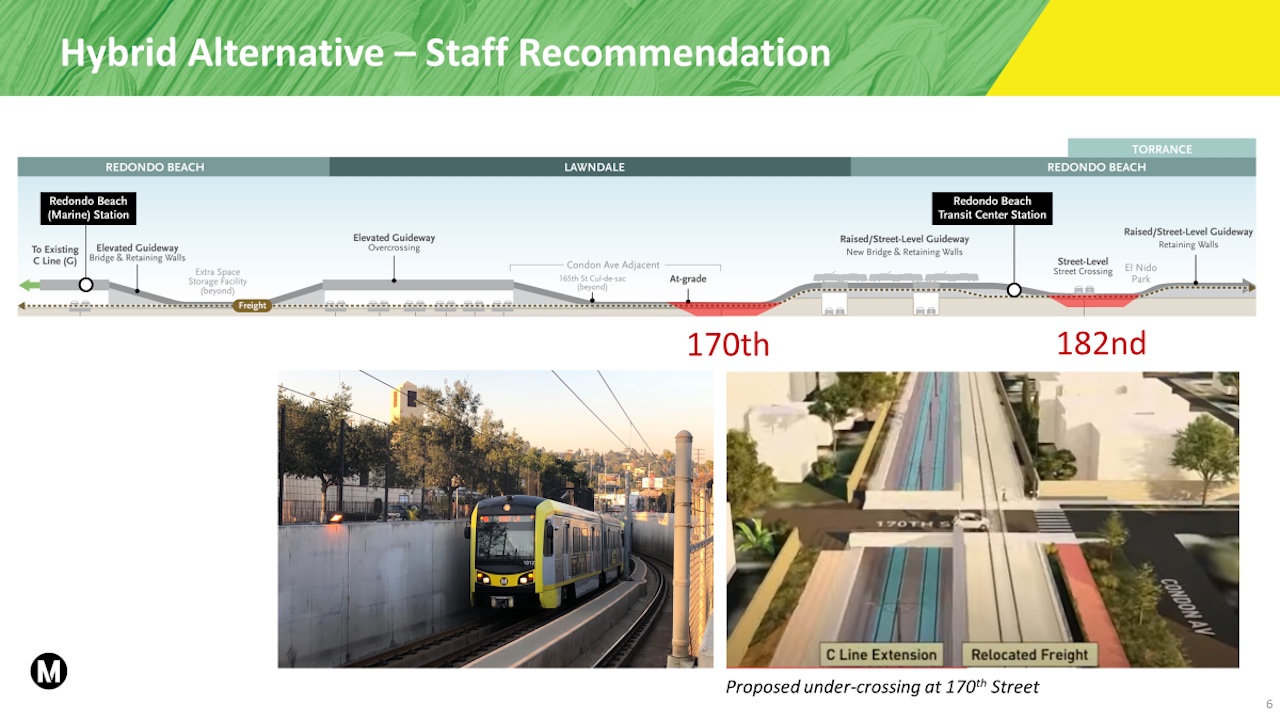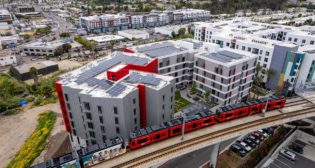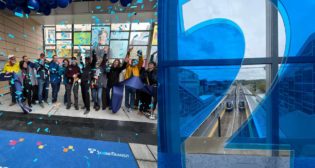
Get To Know Our Recommendation for the C Line Extension to Torrance: The Hybrid Alternative!
Written by India Mandelkern, LA Metro
LA Metro image
Over the past few years, the Metro C Line (Green) Extension project to Torrance has been one of our most exciting and talked-about projects. Given all the connections that it’s expected to create, it’s not hard to see why.
By extending light rail from our existing Redondo Beach (Marine) Station to the new Torrance Transit Center, the project will create new, direct connections between the regional transit network and local transit hubs, such as Redondo Beach Transit Center and Mary K. Giordana Regional Transit Center in Torrance. It will travel through Lawndale, Redondo Beach, and Torrance, attracting 1.5 million new riders each year taking up to 3.6 million trips, reducing pollution and shortening commutes throughout the Greater South Bay. With the new operating pattern of the K Line, the project will allow for a one-seat ride between Torrance, LAX, Inglewood and further connections to the Westside and Downtown Los Angeles via the Metro E Line. And it’s going to provide a much-needed alternative to the (very congested) I-405, Sepulveda Boulevard, and Pacific Coast Highway (PCH).
Since early 2021, we have been studying two major routes for the project. The first, the Right of Way (ROW) alignment, follows an existing freight rail corridor that Metro owns and would connect to the Redondo Beach Transit Center, a major multimodal transit hub (think Lawndale Beat, GTrans, Torrance Transit, Beach Cities Transit, and more). The second, the Hawthorne Boulevard Option, follows the I-405 before turning onto Hawthorne Boulevard and would connect to shopping and entertainment at the South Bay Galleria. Both of these proposed alignments would terminate at the future Torrance Transit Center. We have listened to passionate arguments for these two main routes, and we know that many of you have been following those conversations with great interest –– we’ve had nearly 20,000 visits to the project StoryMap and website since 2021!
We’ve had thousands of conversations with many of you about these routes, as well as your expectations, questions, and concerns. Between 2021 and early this year, we held over 60 community engagement events (think scoping meetings, neighborhood walks, open houses, public hearings, pop-up events, and recent events with LA County Supervisor and Metro Director Holly Mitchell) that more than 2,090 people attended. We’ve received over 4,700 public comments from you that we’ve carefully reviewed and used to identify key areas of concern.
After careful study of your questions, comments, and various concerns, as well as consulting technical studies and findings from the Draft Environmental Impact Report (DEIR), we are recommending an alignment that we think will serve the most people while addressing your concerns about noise, safety, and emergency responders. This alternative –– the “Hybrid Alternative” –– is an adaptation of the ROW elevated/at-grade alignment. It will still follow the Metro-owned freight corridor and include a station at the Redondo Beach Transit Center, but importantly, it will have under-crossings at 170th and 182nd streets. These under-crossings will locate the light rail under the existing streets and will address concerns about noise, safety near schools and school routes, and potential delays to firetrucks, ambulances, and other emergency responders. This alternative also includes the construction of three new walking paths along the Metro ROW, and updating the existing freight tracks to current standards that improve the safety of eight freight-crossings. These updates would also reduce noise and vibration by creating a “quiet zone ready” corridor. Moreover, because most of the construction would be staged on Metro-owned property, potential property acquisitions and impacts to traffic and parking will be very minimal.
Now, we’re approaching a major milestone as the Metro Board of Directors will consider this recommendation as the Locally Preferred Alternative (LPA). This is a major step in a project’s development, as it allows staff to respond to all comments on the Draft EIR, focus engineering efforts on the chosen route, and complete the Final EIR for potential project approval under the California Environmental Quality Act (CEQA). We’re grateful to all the community members who shared their thoughts with us at the Planning and Programming Committee meeting and Executive Management Committee meeting last week. Got a question or comment? Email us at [email protected].
Updated FAQs & Outreach Summaries
To help keep you informed, we’ve updated a list of frequently asked questions and answers based on the recent feedback received from community meetings and events. To access it, please go to the Project Filing Cabinet (Project Dropbox site) and click on the FAQs folder.
We have also prepared summaries of recent community engagement events in Winter 2023/2024. Summaries of all outreach events for this project can be accessed on the project website by visiting the Project Filing Cabinet (Project Dropbox site) and the Draft EIR Community Engagement folder.
What’s Next?
The project will go to the full Board meeting in May to consider the staff recommendation and approve a Proposed Project and LPA. If the Metro Board approves an LPA, the Project team will move forward with a Final EIR based on the selected LPA, perform additional analysis and design refinements, respond to public comments and questions received during the Draft EIR review period, and prepare a Mitigation, Monitoring & Reporting Program (MMRP) for the project. More information on can be found on the project website.



